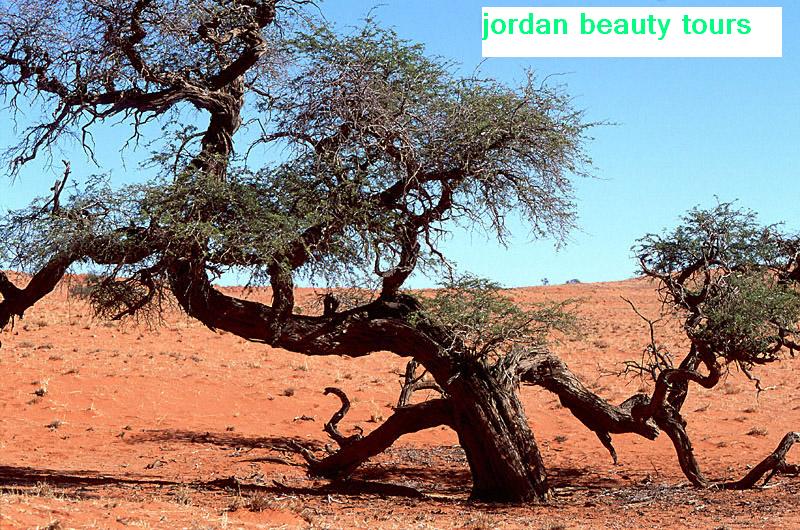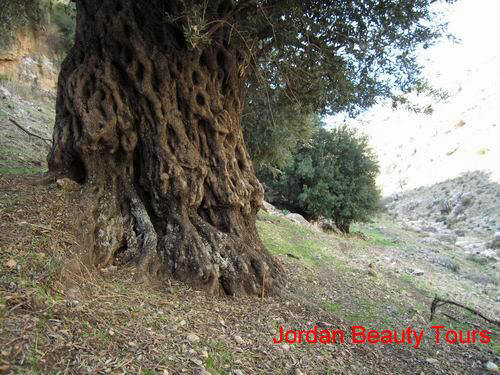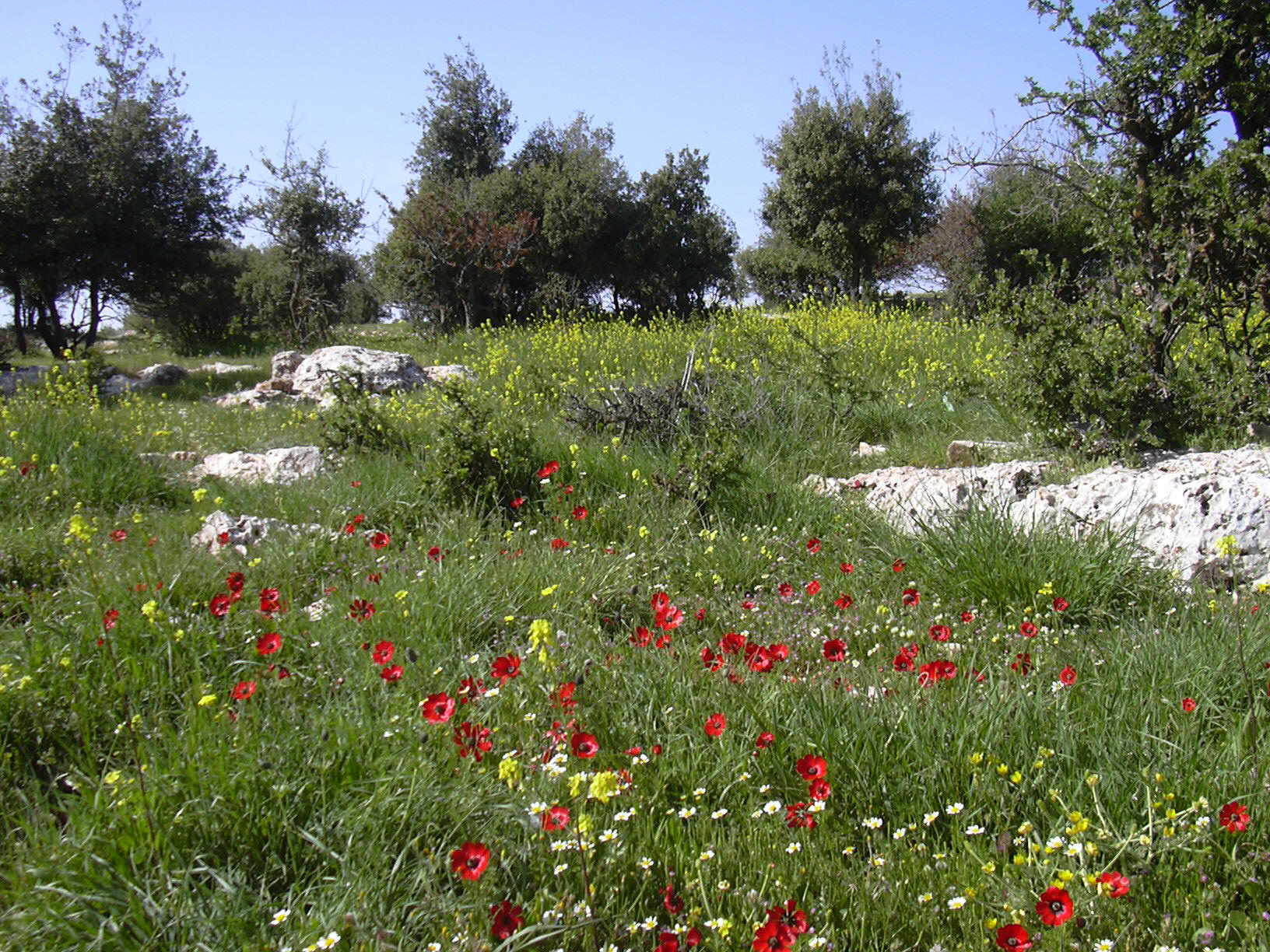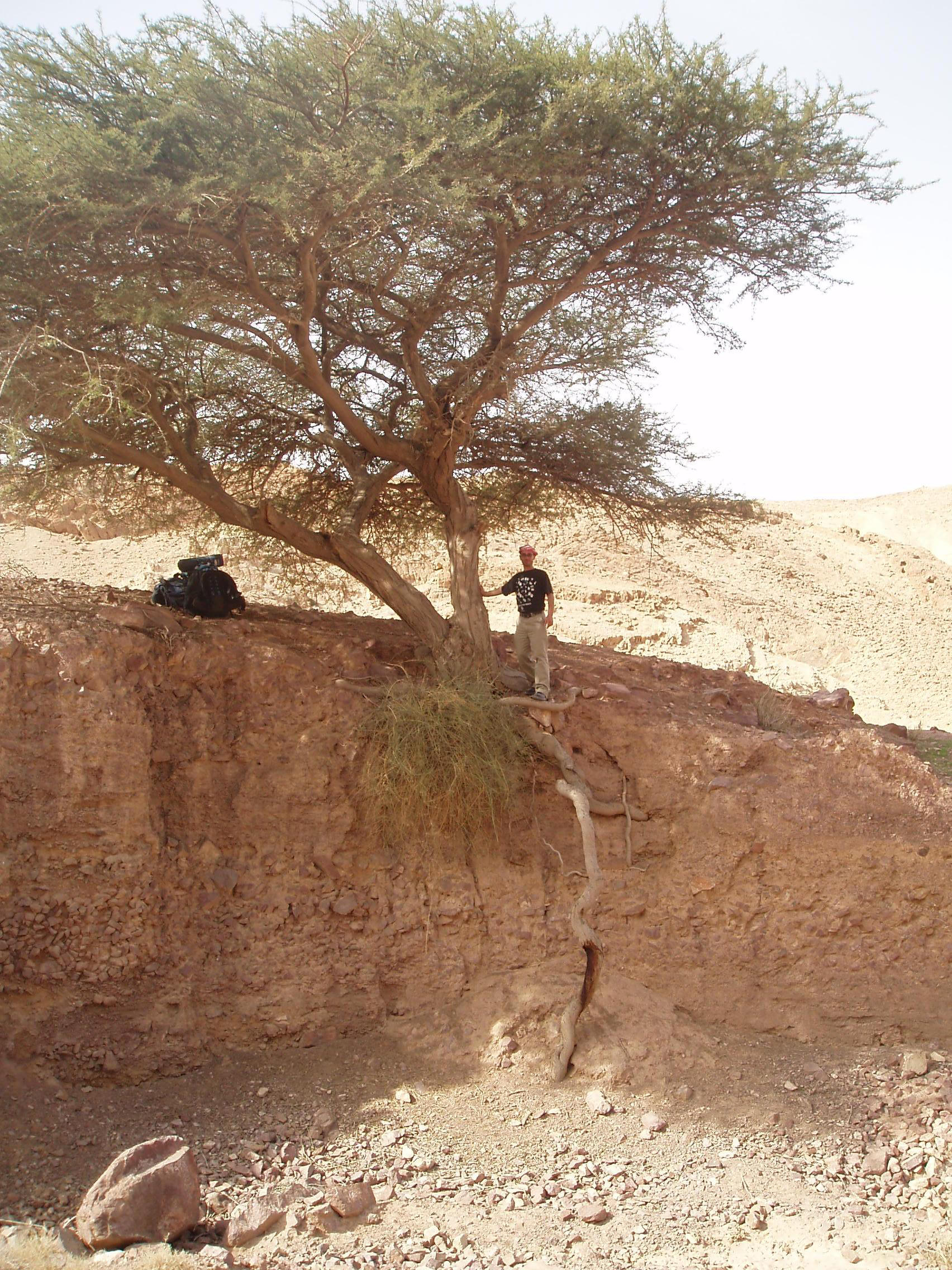1200 year old tree and plants around
Jordan Rift Valley
JORDAN THE HOME OF MORE THAN 600 SPECIES OF OLD TREES AND HERBS THE HOME
OF 1200 YEAR OLD TREE

Since the dawn of time, our land” JORDAN” has wittiness the growing of
many different trees and plants .Wheat was first cultivated in “Baida”
Little Petra. When the man was first experimenting with agriculture,
gathering the nuts, and hunting the wild animals. Even the Nabateans,
the people who carved Petra 2000 year ago, planted juniper tree, olive,
oak, grapes, and pistachio. Their wine presses and juniper-beams can be
seen till this moment in Petra.
In this tour, travelers can see most of the old tree allover Jordan as
well some treks and historical sites. But we focus on the old trees and
herbs with assistance of agricultural guides licensed from the ministry
of agriculture in Jordan.
Tour itinerary:
Day 1: Amman – Jerash
Meets and assist at airport, visa formalities, following by transfer to
Olive Brach hotel located on hilltop with magnificent view of olive
droves, and Jerash.
Day 2: Jerash – Wadi Al-Yabis
After breakfast we will drive to west of Jerash and we will trek in Wadi
Al-Yabis: It is a truly beautiful valley descending 20 Km from the
forested uplands to the warmth of the Jordan Valley and offering some
excellent walks and treks. Where we find old olives trees some 2000
years old, as well as pine, we trek for six hours crossing between
amazing view of old trees, which some if it exist since 900 BC, evening
drive back to Olive Branch Hotel, for dinner and overnight.
Day 3: Ajlun Castle – Dibbin - Zubia
After breakfast drive 23 Km west of Jerash to Ajlun Castle a short visit
in the castle: the Ajlun Castle is locally known, was the base of the
Arab forces of Saladin, when he defeated the Crusaders in the 12th
century. The Ajlun Mountains are famous for their lush vegetation and
thick green forests and a good place for hikes. The castle of Ajlun was
built in 1184 by a nephew of Salah al-Din (Saladin to Westerners) to
defend the land held by the Arabs from the Crusaders. Then we will
continue to Dibbin: The best remaining area of mature, natural Pinus
halepensis forest in the country, on limestone slopes of the highest
hill range in northern Jordan, between 550 and 1,000 m. Under storey of
Arbutus and evergreen Quercus. Parts of the forest remain remote from
habitation, although there are some pockets of agriculture. The
surrounding area has oaks and olive groves as well. There is a much-used
recreational area in the centre of the site, with parking spaces,
barbecue sites, restaurant and playgrounds. Afternoon back to Zubia’s
woodlands consist mostly of Oak trees, interspersed with Pistachio,
Pine, Carob, and Wild Strawberry trees. These trees have been important
to local people for their wood, scenic beauty, and quite often for
medicine and food. The Roe Deer is adapted to forest habitat, and feeds
on a variety of trees, shrubs and grasses. The rich Mediterranean-like
forests that covered the Ajloun area provided an ideal habitat for
millennia. However, deforestation and desertification over the past 200
years led to the decline in numbers of the Roe Deer. Three Roe Deers
were introduced to the captive breeding enclosure in Ajloun in 1988,
from a similar habitat in Turkey. Today, there are thirteen Roe Deer at
Ajloun. Back to Olive branch hotel in the evening for dinner and
overnight.
Day 4: Madaba – Nebo – Wadi Araba
Early in the morning breakfast short visit to Madaba and Mount Nebo: (20
km from Dead Sea), famous as a land of Mosaics. The most famous of the
mosaics being the wonderful map of Palestine and Jordan in the Greek
Orthodox Church of St. George. Continue to Mt. Nebo for tour of the site
believed to be home to the tomb of Moses. Then transfer via the Kings’
Highway down to Dead Sea: the rich botanic diversity of Moab and Edom is
strongly related to the topography of the Dead Sea rift. Crossing the
eastern flank of the Rift east-to –west, from the plateau to the bottom
of the valley, there are steep gradients of altitude, temperature and
precipitation, which are responsible for a vertical succession of belts
of vegetation. Evening continue driving to Wadi Araba Camping with
Bedouin family, stay at their tent, overnight.

Day 5: Wadi Ghuwier – Hamman Dethneh – Wadi Nakheel – Mansoura
In the morning after breakfast with the Bedouin family we will trek in
Wadi Ghuwier: are garnished by hanging gardens. Its water flow changes
with the season, but even in the summer it is a splendid route. After
three our caynoning in Wadi Ghuwier we arrive Hammam Dethneh which is
Oasis, old palm trees, and escorting to Wadi Nakheel ( Palm canyon) trek
up to Mansoura village, camping and overnight (8 hours trekking).
Day 6: Heisha – Beida
Today is special day to visit the Heisha (Abdalia reserve) where its
full of Oak and Pistachio some are 1200 year old, trekking around
Abdalia Reserve, and discover the Artemisia sieberi, Red Junioer and
Pistachio almantica, we will have lunch BBQ, enjoy the sunset of Petra
mountains, and evening drive down to Amarein Bedouin Campsite (5 Km),
dinner and overnight . .
Day 7: Petra
Today will visit the historical sites of Petra, (the Rose-Red city)
including the Siq, the Treasury, city centre, the Royal tomb, the
theatre, the High Place of Sacrifice, Wadi Farasah and the Roman Soldier
Tombs. Lunch in Petra, then evening hike back via the Siq to Wadi Musa
for freshen-up followed by transfer to Beidha (little Petra) for gala
B-B-Q dinner under the stars, then back to Wadi Musa for O/N hotel.
***The dinner will be Arabic cuisine served open buffet style including
Bedouin (folklore) entertainment.
Day 8: Petra – Amman – Airport.
After breakfast, drive via desert high way to Amman or airport for your
departure.
Jujuble (Ziziphus spina christi): A thorn tree of tropical
origin, which can be found in the lower reaches of most of areas in
south of Jordan. it is species name means "thorn of Christ", since
according to one tradition Jesus was crowned with its brancges. three
prominent viens in its leaf are considered by some as a symbol of the
Holy Trinity. The tiny apple of jujube is edible for humans.
Palm (Pheonix dactylifera): The date
palm is found all over the Sahara Arabian region. It was probably
domesticated about 6,000 years ago in Moesopotamia or possibly in the
Rift Valley. Palm fibers are used for ropes and basketry and its dates
can be eaten fresh or dried.
Pistacia atlantica: The steppe tree
Pistacia atlantica may grow to great thickness (girth 1-4 m, height 3-10
m) and reach hunderds of years in age. In the past, large trees were
probably held beneath them. The resin of the tree was used as incens. A
limited number survive on the Jordanian plateau.
Red Juniper (Juniperus phoenicea):
No other plant represnts the vegetation of Edom better than the
Mediterranean Red Juniper, which form magnificant open woodlands on the
slpoes of Edom. Its global range of diestribution includes the western
Mediterranean (Marocco, Spain) as well as Crete and the Aegean Istalnds.
Solitary stands are found on the peaks of northern Sinai.
White Desert Broom (Retama raetam): The white broom, which is
one of the dominant plants of Sahara, grows in many wadi beds and is
well adapted to the aridity of the desert air. During most of the year
it is leafless, using its thin and elongate green stalks for
photosynthesis.
Wormwood (Artemisia Sieberi): The
wormwood is a steppe bush regulary spaced over slopes and plains around
Jordan. Wormwood aroma spreads far and wide, attracting the goats, which
have a taste for it. Its latin name Artemisia, honors the hunting goddes
Artemis who revealed its medicinal secrets to mortals. Tea brewed with
Wormwood is used against stomach-ache
|
![]()